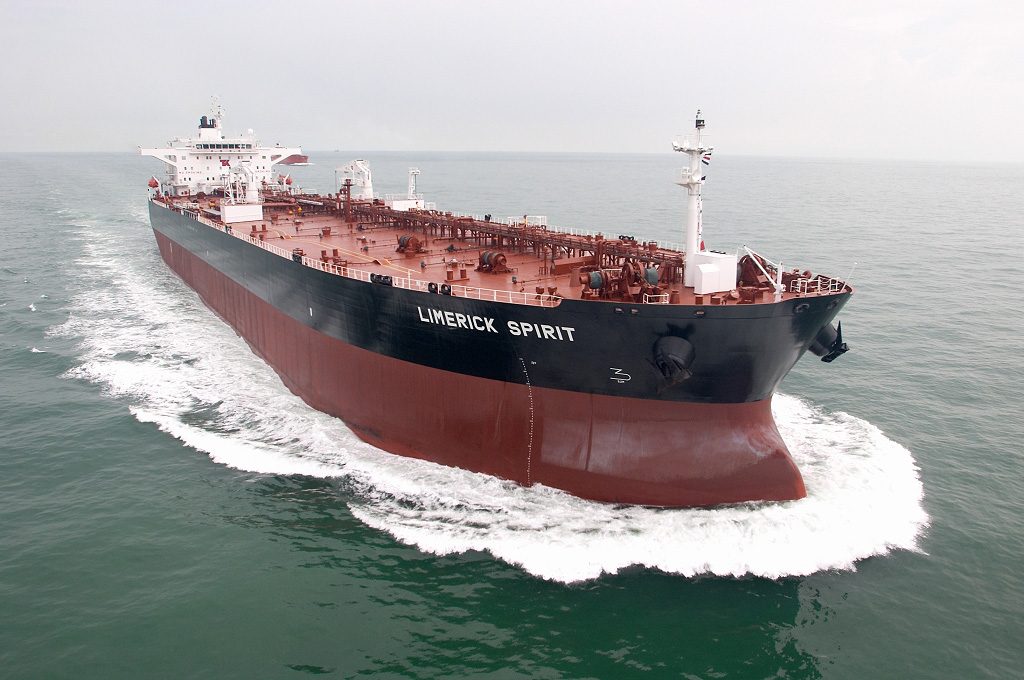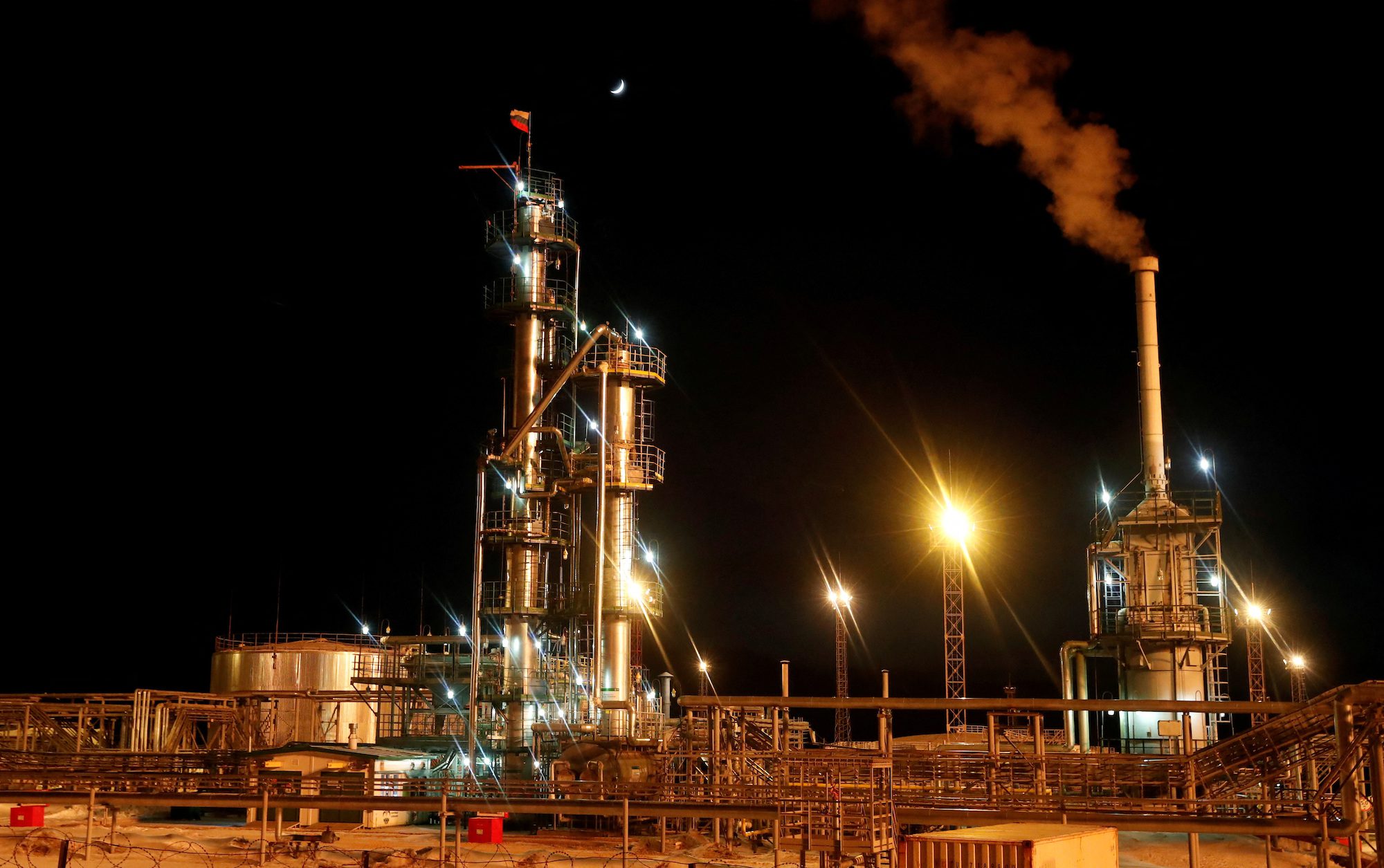Limerick Spirit, a 105k DWT tanker, image: Teekay
(Bloomberg) — Teekay Corp., the biggest operator of Aframax crude tankers, is poised to return to profit after three years of losses as record Russian oil exports by sea boost charter rates to the highest since 2008.
Shipments from the new port of Ust Luga on the Baltic Sea and Kozmino on the Sea of Japan will rise as much as 33 percent to about 290 million barrels in 2013, state pipeline operator OAO Transneft said July 12. Aframaxes, carrying 690,000 barrels, are the most commonly used ships at the terminals because of depth and port restrictions. Shares of Teekay, which operates 60 of the vessels, will rise 23 percent in the next 12 months, the average of eight analyst estimates compiled by Bloomberg shows.
Producers from Russia to Saudi Arabia to Canada are pumping more oil to meet record demand from a global economy the Paris- based International Energy Agency predicts will need an extra 1 million barrels every day next year. With consumption growing fastest in Asia, cargoes for ships hauling crude across oceans will be the most in five years in 2013, according to London- based Clarkson Plc, the world’s biggest shipbroker.
“We have this brand new market,” Teekay Chief Executive Officer Peter Evensen said in a phone interview July 5. “The most important thing is that the developing world continues to develop and need much more energy. We’re a play on the build-out of the world’s energy infrastructure.”
Shares of Hamilton, Bermuda-based Teekay rose 6.7 percent to $28.51 this year in New York trading and will reach $35.13 in 12 months, the analysts predict. The Lloyd’s List-Bloomberg Top 50 Shipping Index of the largest companies in the industry declined 4.4 percent since the start of January as the MSCI All- Country World Index of global equities advanced 3.6 percent. Treasuries returned 3 percent, a Bank of America Corp. Index shows.
More Bullish
Teekay will narrow its net loss to $45 million this year, from $103.1 million in 2011, before returning to profit of $15.7 million in 2013, according to the mean of five analyst estimates compiled by Bloomberg. The consensus has been getting more bullish, rising from a prediction for profit of $2.26 million six weeks ago, the data show.
The surge in Russian cargoes will help erode a glut of Aframaxes that drove rates down 44 percent to $7,994 a day since the start of January, according to the London-based Baltic Exchange. Returns for owners will average $17,000 in 2013, 23 percent more than this year, the median of 10 analyst estimates compiled by Bloomberg shows. They need about $8,400 to cover costs including crew and insurance, according to a London-based unit of Moore Stephens LLP advising the industry.
Russian Shipments
The surge in Russian shipments may be curbed by slowing growth. The Washington-based International Monetary Fund estimates a global expansion of 3.5 percent this year, compared with 3.9 percent in 2011. World oil consumption declined 1.6 percent in 2009, the most in more than a quarter century, as economies endured the worst recession since World War II, according to data from London-based BP Plc. The IEA expects demand to rise 1.1 percent to 90.9 million barrels a day in 2013.
While Aframaxes are getting new cargoes from Russia, they are losing out in the Atlantic as trade shifts to Asia. Buyers favor very large crude carriers, each carrying about 2 million barrels, for the journey because they are more economical. About 700,000 barrels a day has moved onto the longer route, according to Andreas Vergottis, the Hong Kong-based research director of Tufton Oceanic Ltd., the biggest shipping hedge fund.
Ship Building
The Aframax rate projected for next year would still be 60 percent less than the $42,648 the vessels were earning in 2008, according to the Baltic Exchange, which publishes costs along more than 50 maritime routes. That encouraged owners to embark on the biggest ship building program in history and the fleet expanded 17 percent since then, according to IHS Inc., an Englewood, Colorado-based research company.
The glut is now diminishing as the slump in rates spurred more scrapping of older vessels and owners refrained from adding to orders. Outstanding contracts at ship yards are now equal to 6.6 percent of existing capacity, the lowest ratio of any class of oil tanker tracked by IHS. The oversupply of ships also extends to most of the rest of the merchant fleet. Costs for Capesizes, which carry iron ore and coal, fell 75 percent this year while rates for VLCCs declined 32 percent.
Teekay sold 80 percent of its oil-carrying unit Teekay Tankers Ltd. since an initial public offering in 2007, remaining the biggest Aframax operator by managing other companies’ ships. The company spent about $3 billion buying liquefied natural gas carriers, vessels servicing the offshore energy industry and shuttle tankers that ply dedicated trade routes, Vancouver-based Evensen said. Conventional tankers accounted for 31 percent of revenue last year, from 62 percent in 2006, according to data compiled by Bloomberg.
Investment Banking
LNG tanker rates surged in the past several years because of demand from nations including Japan who are too far away from producers to use pipelines. Rates will jump 42 percent to an average of $136,000 a day this year, according to RS Platou Markets AS, the investment-banking unit of Norway’s largest shipbroker. Oil producers will drill 20 percent more offshore wells this year as they seek to keep up with global demand, Morgan Stanley estimates. Teekay owns vessels that store crude extracted at sea before shuttling the oil to onshore refineries.
Its Aframax business is now rebounding as new shipments emerge in Russia. Cargoes from Kozmino will advance as much as 30 percent to about 146.6 million barrels next year, according to Igor Dyomin, a spokesman for Transneft. Those from Ust Luga will climb to 20 million tons from 15 million to 18 million this year, he said. Loadings at the Baltic port of Primorsk, the country’s biggest oil-exporting facility, and the Black Sea terminal of Novorossiysk will be little changed.
Export Capacity
Since Ust Luga started exporting in March, combined volumes from Baltic ports rose 24 percent to the equivalent of 14 Aframax cargoes, according to Priscilla Sharun, a spokeswoman for Teekay in Vancouver. Improvements at Kozmino will double its annual export capacity to 600,000 barrels a day by November, according to the terminal’s operator. Loadings averaged 306,000 barrels a day this year, data compiled by Bloomberg show.
“The additional Russian exports will be a support for Aframaxes out of the Baltic and in the Far East,” said Simon Newman, an analyst at ICAP Shipping International Ltd. in London. “With falling fleet growth, we should see the market begin to improve.”
– by Alaric Nightingale and Isaac Arnsdorf, with assistance from Sherry Su in London and Jake Rudnitsky in Moscow. Copyright 2012 Bloomberg.

 Join The Club
Join The Club











